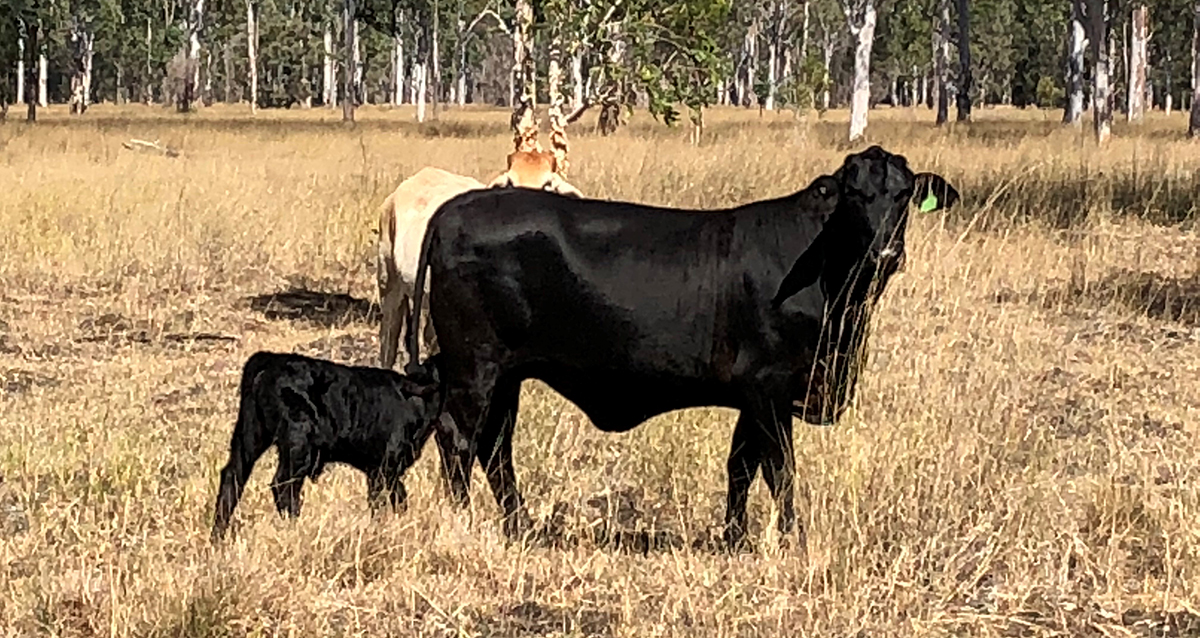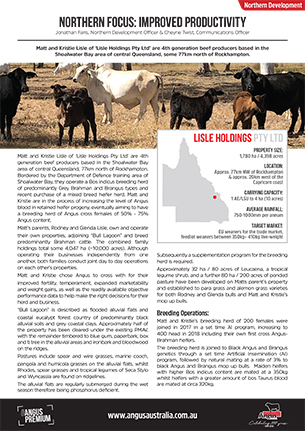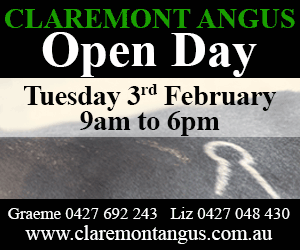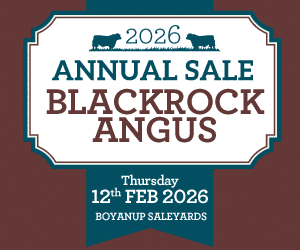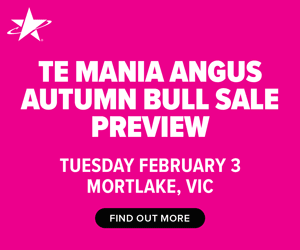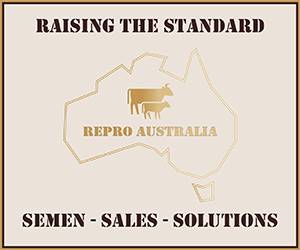Improved productivity
Matt and Kristie Lisle of ‘Lisle Holdings Pty Ltd’ are 4th generation beef producers based in the Shoalwater Bay area of central Queensland, 77km north of Rockhampton. Bordered by the Department of Defence training area of Shoalwater Bay, they operate a Bos indicus breeding herd of predominantly Grey Brahman and Brangus types and recent purchase of a mixed breed heifer herd. Matt and Kristie are in the process of increasing the level of Angus blood in retained heifer progeny, eventually aiming to have a breeding herd of Angus cross females of 50% – 75% Angus content.
Matt’s parents, Rodney and Glenda Lisle, own and operate their own properties, adjoining “Bull Lagoon” and breed predominantly Brahman cattle. The combined family holdings total some 4,047 ha (~10,000 acres). Although operating their businesses independently from one another, both families conduct joint day to day operations on each other’s properties.
Matt and Kristie chose Angus to cross with for their improved fertility, temperament, expanded marketability and weight gains, as well as the readily available objective performance data to help make the right decisions for their herd and business.
The Land:
“Bull Lagoon” is described as flooded alluvial flats and coastal eucalypt forest country of predominantly black alluvial soils and grey coastal clays. Approximately half of the property has been cleared under the existing PMAV, with the remainder timbered to blue gum, paperbark, box and ti tree in the alluvial areas and ironbark and bloodwood on the ridges.
Pastures include spear and wire grasses, marine cooch, pangola and humicola grasses on the alluvial flats, whilst Rhodes, spear grasses and tropical legumes of Seca Stylo and Wyncassia are found on ridgelines.
The alluvial flats are regularly submerged during the wet season therefore being phosphorus deficient. Subsequently a supplementation program for the breeding herd is required.
Approximately 32 ha / 80 acres of Leucaena, a tropical legume shrub, and a further 80 ha / 200 acres of ponded pasture have been developed on Matts parent’s property and established to para grass and alemon grass varieties for both Rodney and Glenda bulls and Matt and Kristie’s mop up bulls.
Breeding Operations:
Matt and Kristie’s breeding herd of 200 females were joined in 2017 in a set time AI program, increasing to 400 head in 2018 including their own first cross Angus-Brahman heifers.
The breeding herd is joined to Black Angus and Brangus genetics through a set time Artificial Insemination (AI) program, followed by natural mating at a rate of 3% to black Angus and Brangus mop up bulls. Maiden heifers with higher Bos indicus content are mated at a 350kg whilst heifers with a greater amount of bos Taurus blood are mated at circa 320kg.
The AI program is carefully timed for calving to coincide with traditional early storms and wet season with subsequent feed quality and availability. AI calving commences on the 29th of November each year with natural mated calving to begin from the 26th of December.
The 2018 AI program is as follows:
- 09/02/2018 – Implant QMATE and x1 needle for all joined females,
- 17/02/2018 – Take out the QMATE implants and x2 needles for all joined females,
- 18/02/2018 – Further needle
- 19/02/2018 – Inseminate
- 16/03/2018 – Install KAMAR detectors
- 07 – 11/03/2018 – Clean up AI when any females cycle,
- 18/03/2018 – Place mop up bulls with heifers at 3% joining rate
- 01/04/2018 – Take out mop up bulls from heifers
A nutrition program for maiden heifers is given, consisting of molasses and grain lick for 8 weeks preceding, 8 weeks during and 8 weeks after joining. They are also given a molasses mineral lick for other trace elements. This program is replicated for the mature females excluding the molasses mineral lick.
Branding is conducted in February each year with a second run a fortnight later. Branding rates are recorded at 80% – 85% as there is usually only notional loss after calving.
Females are culled on fertility and temperament. Given the relatively young age of the breeding herd so far, culling for age is not yet a consideration.
Calves are weaned for 5-6 days in the yards and are tailed out each day and educated by working dogs. After yard weaning the weaners are then placed in a fresh paddock close to the homestead.
Bull Selection and Benefits of Angus Genetics:
Matt and Kristie have specific bull selection requirements that are needed to best suit their herd and management. These are in order;
- Docility – for ease of management and growth rates,
- Fertility – (& soundness) demonstrated through fertility and soundness evaluation tests and strong fertility EBV’s,
- Marketability – bulls to have good balance between growth and muscling and their ability to lay down fat and to marble, with preference for moderate growth bulls demonstrating good fat and marbling scans and EBVs.
Matt and Kristie ensure that bulls are registered and have EBV’s to help predict performance and trace pedigree, therefore providing a level of predictability and consistency in progeny. This is no more evident than in progeny of Brangus x Brahman producing a wide variation in progeny type, presenting marketing challenges. As a result, they have been favouring the straight Angus over Bos indicus breeders to build consistency in progeny.
When breeding replacement females, there is a focus on fertility, growth, fats and IMF traits to maximise earlier fertility through reaching optimal weight and body condition scores quicker, ability to get back into calf quickly as well as rebuild fat stores after calf weaning.
Visual criteria when selecting Angus bulls include preference of sleek coats for improved parasite prevention and management, and bulls demonstrating more leg allowing for better mobility and improved servicing ability on the larger framed bos indicus females.
Matt and Kristie traditionally purchase their Angus bulls in April each year to avoid the worst of the heat and humidity and allow for 6 months acclimatisation prior to joining. The bulls are put on good pasture and monitored before being introduced to other bulls. Angus genetics have historically been sourced from Te Mania, Sydgen Trust, Booroomooka and Ascot studs.
The Results – Fertility:
Angus and Brangus genetics have led to an 86% pregnancy test rate in 2018 following the AI round and only 1 follow up cycle with mop up bulls. Matt attributes this to the improved fertility and libido of the Angus breed.
In comparison, the family’s pure Bos indicus herd joined to Grey Brahman bulls achieved an 83% preg test rate, however this was only achieved after x6 cycles as opposed to the AI round and one cycle when using Angus and Brangus mop up bulls.
Prior to using Angus and Brangus genetics, historical pregnancy testing of approximately 60% was considered normal. Using Angus bulls in conjunction with overall improved management practices, fertility issues have been addressed.
AI pregnancy rates of Angus/Brangus x Brahman 2016 and 2017 females averaged 54% as opposed to 45% for 2016 straight bred Brahman females.
The Results – Temperament:
Angus bulls with high docility EBV’s and culling any breeding animal displaying a wild or nervous temperament has resulted in the herd now being handled by one person with the assistance of working dogs. Subsequently, the breeding herd has improved fertility through the docile Angus cross females achieving joining weights earlier and cycling earlier.
The Results – Meeting Market Specs:
Matt estimates the Angus influenced progeny consistently weigh on average 20kg more per animal than pure Bos indicus progeny across their entire lives. This increased growth rate eliminates the need to use HGP’s which would otherwise break their EU accreditation.
Furthermore, the progeny of Angus bulls can lay down fats quicker and have higher levels of IMF, allowing for greater marketability depending on the seasons and available feed.
The Results – Marketability:
The Angus influenced progeny have achieved target specifications quicker and led to an average premium of + 20c/kg more than straight Bos indicus calves. For a 200kg weaner, that equates to a $40/head increase, making for an attractive bonus on any commercial operation.
Angus cross progeny have achieved excellent results for Matt and Kristie in heavier weight categories. Two of their Angus x Brahman steers entered into the 2018 Central Qld Carcass Classic in the ‘Single Grassfed 2 Tooth Trade Steer/Heifer (180 – 300 kg CW) category resulted in;
- Dressed weights at 239kg (Steer 1) and 343kg (steer 2),
- Dentition of 0 (steer 1) and 2 tooth (steer 2),
- Fats of 16mm and 13mm (steer 1) and 9mm and 7mm (steer 2) on the P8 and rib sites respectively,
- EMA of 72cm (steer 1) & 86cm (steer 2),
- MSA index scores of 52.05 (steer 1) and 52.95 (steer 2).
Increased marketability through MSA compliance was recently demonstrated with cull pasture finished Angus x Brahman heifers. The draft averaged HSCW of 227.3kg, dentition of 2, fats of 11mm, MSA ossification score of 181 (although 75% of the draft scored 170) and MSA marbling score of 260 across the draft. Selling for an average of $4.50/kg, these returned $1,023/head.
Angus Australia acknowledges the funds provided by the Australian Government through the Meat & Livestock Australia Donor Company (MDC).
This resource was created as a result of a collaboration between Angus Australia and Meat & Livestock Australia Donor Company (MDC) (Project P.PSH.1063).

